I entered the dark, narrow passageway. The temperature dropped considerably from the heat outside. More than that, I was immediately aware of the overwhelming rush of energy I felt through my body. Was it because I was in very close quarters? I’d been in caves before and hadn’t experienced anything of the like. It seemed to vibrate off the very walls and permeate the air, alerting me to sacred space. Something of significance happened here, was resident here. I felt it.
I was in the Vézère Valley in the Dordogne of southwestern France, this section called the Périgord Noir, a lush area of narrow winding roads through thick forests. It’s home to the medieval town of Sarlat-la-Canéda, where I was staying, hidden spots that touch the soul, and a system of caves full of engravings and paintings going back to 23,000 BCE. The area had been declared a UNESCO World Heritage location, but I’d never heard of it. I was there explicitly due to Beebe Bahrami’s book Café Oc that spoke of its richness and accessible mystery. The Périgord Noir came at the end of my Annual Pause, this time a memorable, month-long sojourn in France that took me through Paris and southward to the tiny town of Durfort in the Tarn for an art retreat then on to Sarlat, finally ending in Toulouse. This is the leg I want most to share, particularly since the energy of the region is still resonating so strongly for me.
Hallowed Caves of the Périgord Noir
You have probably heard of Lascaux and maybe Rouffignac. It’s no longer possible to enter Lascaux. Now there’s a sophisticated reproduction to go through instead. To view Rouffignac, tourists board a little train, probably similar to the miners’ train I straddled as a child visiting the salt mines of Salzburg. That’s not the experience I wanted. I wanted to get the real feel of these caves. I wanted to put my feet where ancient ones had, be able to closely examine the expressions and impressions they’d left.
Les Combarelles and Font-de-Gaume were top on my list, and I’d had little hope of actually going. Access was strictly limited to no more than 8 and 12 people at a time, respectively, and just a few opportunities to enter per day. In research, I’d read about people showing up outside the ticket office from 6 AM or before in high season, holding a place in line — for hours — to buy a ticket to go later in the day. I suppose I might have done that. But I was without a car, and I could find no small group tour to take me.
There’s a bizarre regulation in the region that works against solo travelers. A tour agency must have at a minimum two people to proceed. Don’t ask me why. Finally, I found a taxi-tour service who, due to the way their business was set up, could slip in between the cracks of that ruling and accommodate me with my personal itinerary. Thankfully, Christoph, the owner, was able to wrangle secured entry for me ahead of time. No waiting. His wife Sarissa, my driver that day, told me Christoph had been born in the area. He was part of a group of about forty locals who, having grown up there, felt so strongly about their homeland they’d banded together to ensure quality tourism.
Les Combarelles sat across a green, well back from the road on the other side of an old stone farmhouse. Sarissa was well satisfied to deliver me into the hands of Pascal, who played a part in the conservation effort she’d mentioned. I completed the group, the rest being French, and Pascal began to lay the groundwork for what we were to see beyond. There were two passages, one open to the public. The cave’s entrance was originally excavated by archaeologist Emile Riviere in 1892. However, it was the owner, Monsieur Berniche, who discovered the rock art in 1902. I put myself in his place at that moment and got chills imagining what it must have been like to stumble upon something unexpected…and so obviously old.
Before we entered, everyone had to store anything they were carrying. Nothing could bump the cave walls. Such was their fragility. We were warned not to brush the walls in passing and to watch our heads. The cave floor had been lowered about a foot to provide a bit more access. But still it was close quarters. I had to be alert. The electric light was quite subdued, barely enough to light the way. Somehow the place played with my sensibilities. I wanted to crouch and duck walk, which is what the artists must have done or crawled on hands and knees in places. The engraved images number 600 or more of those thus far discovered, thought to be from 12,000-10,000 BCE, carved at different times.
It wasn’t long before we came across the initial art. It wasn’t merely an image here and there. It was a very long stretch, like herds of animals drawn one over the other or intersecting as though jostling for their place. The cave was active.
I couldn’t begin to imagine how M. Berniche could have known what he was looking at except undecipherable scratches and scrawling. When Pascal waved a hand light over an area, that’s all I saw. It wasn’t until he used his laser light to outline individual animals that my eyes adjusted…and I was amazed. I had expected very simplistic engravings. Most were surprisingly detailed and accurate to life, or a sweeping line suggesting movement. To me, that requires a sophisticated eye.
I anticipated seeing mammoths, bison and reindeer, but not a tiger, horses, bears and rhinos. There were also a few male and female figures. Curiously, the female figures were never anatomically complete. The head or arms were omitted, even breasts. But not grand derrieres, which were always depicted. I have a theory. These omissions were an act of reverence in that, as in some traditions or religions, something so venerated must not be named. The incomplete female images or symbols like vulvas, which also appeared, were ways to allude to the Sacred Feminine, a laying down of prayers for fertility.

Horse. Courtesy Don’s Maps. Photo: Heinrich Wendel (© The Wendel Collection, Neanderthal Museum).

Courtesy Don’s Maps. Drawings by Capitan and Breuil, 1902.
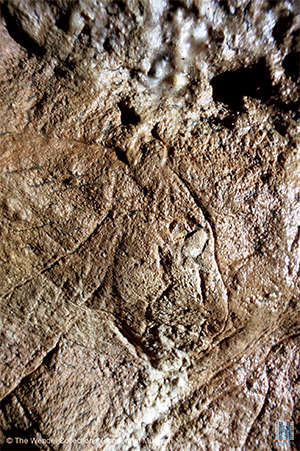
Tiger. Courtesy Don’s Maps. Photo: Heinrich Wendel (© The Wendel Collection, Neanderthal Museum).
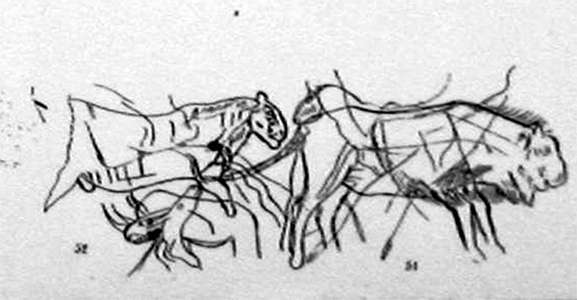
Courtesy Don’s Maps. Drawings by Capitan and Breuil, 1902.
We continued on until our way was blocked. Finally, it wasn’t possible to go farther unless a squeeze beyond on all fours. I was overwhelmed. Really, it was a lot to take in. These were not sterile renderings. I sensed a place of reverence. I could have stayed for a very long time.
We turned to pick our way back in the barely lit passage. I was glad I was second in line, having a time finding my feet. Especially so when the lead disturbed a large bat. It flew up in front of her, like some horror film. We had to duck and swerve.
I could have ended with Les Combarelles. There was so much to digest, and Pascal truly set the stage and helped bring the site to life. But Font-de-Gaume was barely 5 minutes down the road, and I had a ticket.
Apparently, the Périgord Noir experienced a run of discoveries in the early 1900s. While the Grotte Font-de-Gaume was generally known for some time, the local schoolmaster, M. Peyrony, put significance to the rock art after he’d visited Les Combarelles with an archaeologist. These are the most intact examples of polychrome painting, dating back to 16,000 BCE. About 250 paintings are known at this point, but there may be many more covered up by calcite and iron deposits. As an example, scientists were cleaning the cave walls and uncovered a frieze of five bison, the most preserved due to the deposits. There are about 30 paintings the public is able to view, mostly bison. The artists had many times taken advantage of the natural lines and bulges of the cave walls, so that the figures were brought to life in bas relief.

Bison. Courtesy Don’s Maps. Photo: Heinrich Wendel (© The Wendel Collection, Neanderthal Museum).
Again, I felt the overwhelming energy throughout the time I was in Font-de-Gaume. There’s no mistaking this, too, was hallowed ground. It couldn’t have been more clear than when the young guide stopped talking and allowed silence to prevail.
Then I touched that other realm that was timeless. I wanted to stay.
An Apparition at Redon-Espic
Jeanne Grave was a simple, 14 year-old shepherdess tending her sheep in deep forest at a winding creek blessed with a spring, a stone hut on the banks for shelter. The story goes that in June 1814 the Virgin Mary appeared and spoke to her in Occitan, Jeanne’s native tongue, and gave a message for her to carry. Jeanne told her parents that “the pretty lady” said everyone must pray and perform penance, to return to the Church, or they would soon die. This during a time of great taxation, famine and pestilence, probably cholera, when many had fallen away from the Catholic Church.
Jeanne immediately carried the Virgin’s message and beseeched her parents, but was ignored. She knocked at the doors in the small village where she lived repeating the Virgin’s words over and over. She was ridiculed. She herself made the return, regularly performing the rosary and receiving communion. Again in July, the Virgin appeared at the spring repeating the message. Her family and villagers continued to treat her with disdain. In October 1814, Jeanne’s parents died. Jeanne followed a month later. Pestilence took many of the people in the community of Castels fulfilling the Virgin’s prediction, the interpretation being punishment was meted out for lack of faith.
During Jeanne’s burial procession a violent storm broke out, but Jeanne’s coffin, its bearers and the candles lighting the way were completely protected, remaining dry. Local people were so taken with this event, they began to gather in the wild place where Jeanne had experienced the apparition. In 1818, with no formal canonical investigation, the Bishopric of Périgueux sanctioned gatherings at a small, isolated Romanesque church, once a convent, named Redon-Espic close to the shepherd’s keep where it all happened. For more than 20 years to present day on the Sunday closest to September 8, the Virgin Mary’s Feast Day, locals gather at night in deep forest and make a candlelit pilgrimage to the church and on to the shepherd’s keep, which has become a shrine. Prayers are given and offerings made on the stone altar on a rise several yards from the site.
Sarissa was surprised when I told her I’d like to visit Redon-Espic. She said it wasn’t really known to outsiders. She knew how to get there because she rode her horse through that forest. As isolated as this place is now, I can only imagine it more so back in the early 19th century. We drove on dirt roads first arriving at the church.
No one was there, and the doors were unlocked. It had recently received a new roof, curiously made with flat rocks. I remarked on it. It turns out that’s the old traditional way, and the renovators held to it. Sarissa told me to also notice how thick the walls were, made that way to protect from marauders who would attempt to destroy it.
It was quite plain inside. Then I noticed a statue, precariously perched on a stand, in a corner near the altar. It was a depiction of Jeanne and her apparition. The Virgin’s head was missing, probably damaged and not intentional. There were two things about it that got my attention. When I walked around the statue, Jeanne’s gaze was slightly off. It slid by the Virgin like she was looking at something just beyond. The other thing had to do with the Virgin’s lack of hands showing. Maybe they were supposed to be draped inside the sleeves. But these looked fairly flat as though empty. I’m not well versed on typical representations, just what I’ve otherwise seen, and could not find any mention of these two things, which were peculiarities to me.

Statue of Jeanne Grave and the apparition of the Virgin Mary in Notre Dame de Redon-Espic. Photo: Carla Woody.
I sat in a pew to be present to what was there while Sarissa waited for me outside. Our journey continued down a one-lane dirt road. We reached the site of Jeanne’s vision a few minutes later. I was quite taken with the shepherd’s keep transformed into a shrine. In so many ways it reminded me of St. Brigid’s Holy Well in Liscannor, Ireland where I had a powerful experience. While Jeanne’s place didn’t have as many prayers lodged between the stones in the walls, they were there. So were the spring, icons and candles. Up the small rise on the altar was evidence of past rituals. Again, this was clearly sanctified space. Its use continued to present day. After a while, we could hear a car coming. We left just as the man parked, to give the newcomer privacy. He got out of his vehicle holding flowers.

Shrine at Redon-Espic. Photo: Carla Woody.
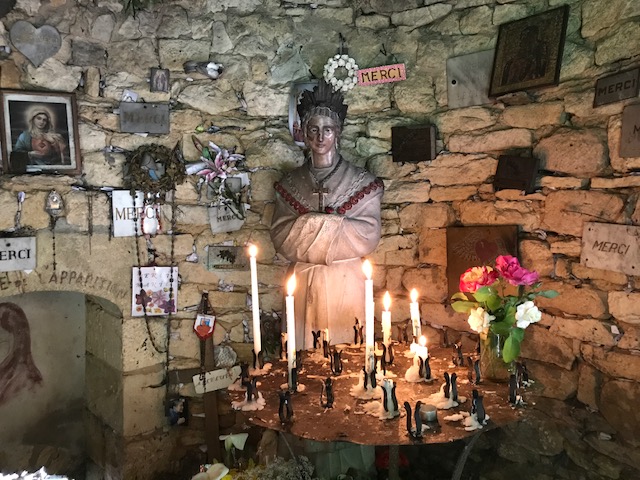
Inside Jeanne Grave’s shrine. Photo: Carla Woody.

Prayers left in the shrine. Photo: Carla Woody.
There are places in the world where the land holds something and waits to reveal itself. In truth, it doesn’t take much to recognize the invitation. It does take a willingness to accept the invitation though, to open to what may not be right in front of your face … then linger.

 On that note, several months ago I stumbled upon Silence: The Mystery of Wholeness by Robert Sardello. There are examples of spiritual literature over the centuries, wisdom writings of great mystics, identifying the heart as the seat of spiritual perception. His writing goes steps beyond in leading the reader to the Presence that resides in the seat of spiritual perception…the wisdom source. This is not something abstract. It’s grounded in full vibration and kinesthetically recognizable. He also offers practices to recognize and develop this spiritual muscle. I’m going to stop here as this is your own area to explore if you like.
On that note, several months ago I stumbled upon Silence: The Mystery of Wholeness by Robert Sardello. There are examples of spiritual literature over the centuries, wisdom writings of great mystics, identifying the heart as the seat of spiritual perception. His writing goes steps beyond in leading the reader to the Presence that resides in the seat of spiritual perception…the wisdom source. This is not something abstract. It’s grounded in full vibration and kinesthetically recognizable. He also offers practices to recognize and develop this spiritual muscle. I’m going to stop here as this is your own area to explore if you like.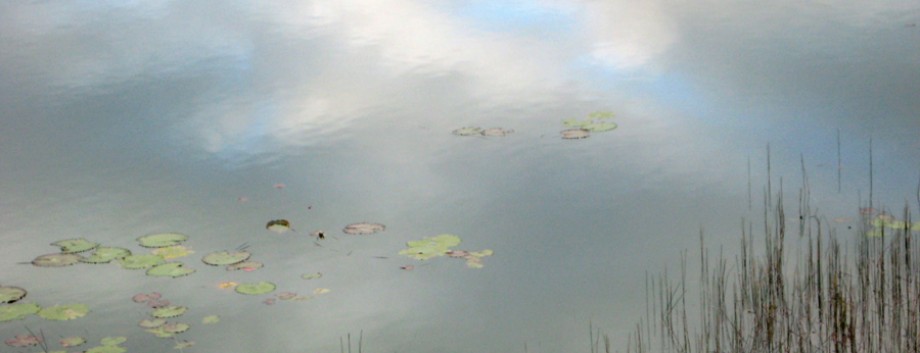













 There was the clever double entendre: A Tale for the Time Being. We’re all Time Beings for the time being. And it’s a novel that involves time, how we experience it, the ways it warps. But you don’t realize it until you’re well into the novel. It’s subtle until firmly anchored.
There was the clever double entendre: A Tale for the Time Being. We’re all Time Beings for the time being. And it’s a novel that involves time, how we experience it, the ways it warps. But you don’t realize it until you’re well into the novel. It’s subtle until firmly anchored.
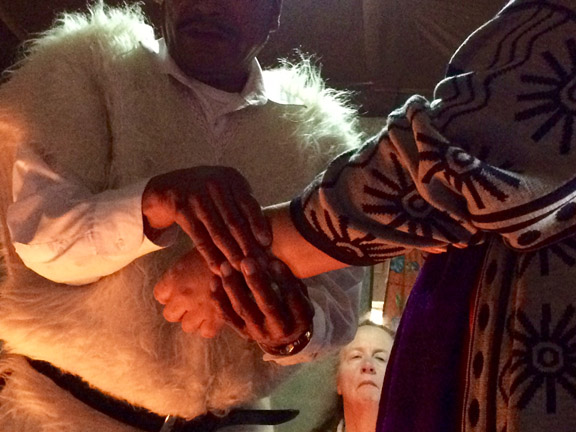
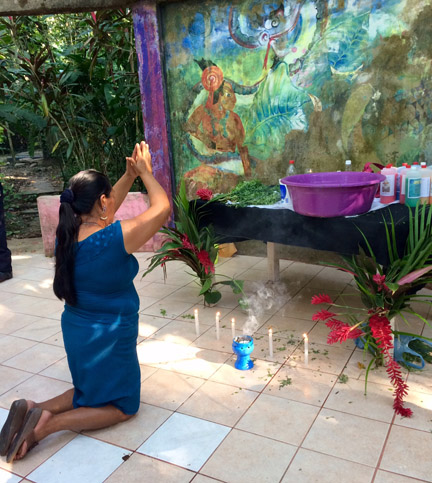

 This 1981 documentary takes us back to the time when women were defined by laundry and, in many parts of the world, still are. As bizarre as it sounds, Director-Producer Roberta Contow shows us this truth—as stated in so many words by the women she filmed.
This 1981 documentary takes us back to the time when women were defined by laundry and, in many parts of the world, still are. As bizarre as it sounds, Director-Producer Roberta Contow shows us this truth—as stated in so many words by the women she filmed.